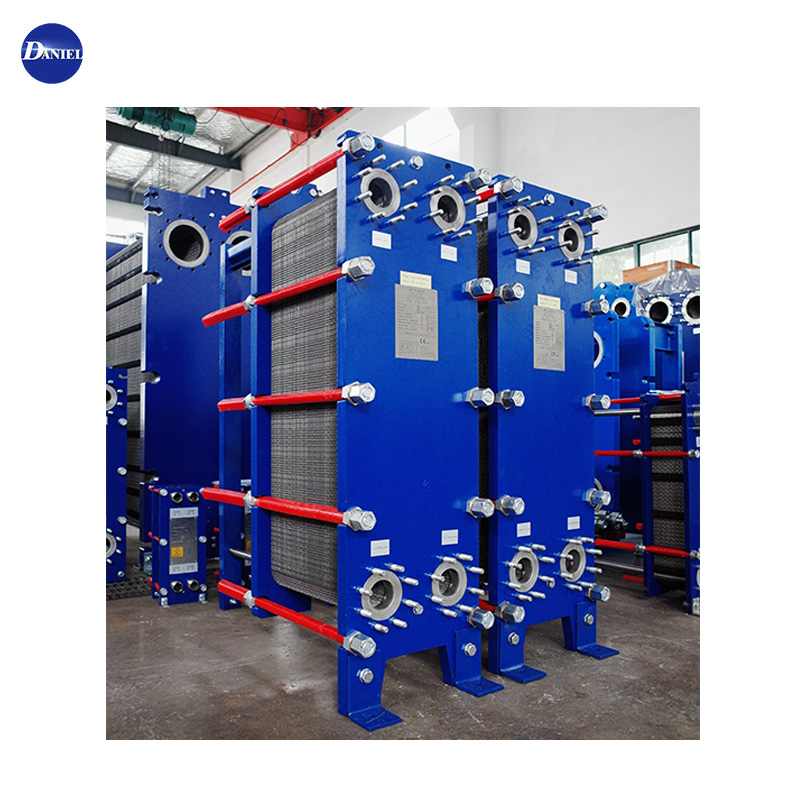What Are the Disadvantages of Plate Heat Exchangers?
2025-07-10
Plate heat exchangers (PHEs) are widely praised for their compact design, high thermal efficiency, and flexibility across industries such as HVAC, food processing, pharmaceuticals, and chemical engineering. However, while they offer many advantages, they also come with certain limitations that can affect performance, maintenance, and suitability in specific applications.
In this blog, we’ll explore the key disadvantages of plate heat exchangers and highlight scenarios where they may not be the ideal choice.
1. Susceptibility to Fouling and Blockage
One of the primary drawbacks of plate heat exchangers is their sensitivity to fouling. The narrow flow channels between the plates, while excellent for heat transfer, can easily become clogged by particulates, sediments, or scaling—especially when handling dirty or untreated fluids.

In industries where fluids contain solids, oils, or biological matter (like in wastewater treatment or food processing), regular cleaning and filtration are essential to prevent performance loss.
2. Limited Tolerance to High Pressure and Temperature
While modern PHEs are designed to handle moderate pressures and temperatures, they typically have lower limits compared to shell-and-tube heat exchangers. This makes them unsuitable for some heavy-duty industrial applications, such as high-pressure steam systems or very high-temperature chemical processes.
For operations requiring extreme operating conditions, alternative exchanger types may be more appropriate.
3. Potential for Leakage at Gasketed Joints
Most plate heat exchangers use gaskets to seal the fluid channels and prevent mixing between the hot and cold fluids. Over time, these gaskets can degrade due to chemical exposure, thermal cycling, or mechanical stress.
This raises the risk of internal or external leaks, which can be problematic in systems involving hazardous or expensive fluids. Regular inspection and timely replacement of gaskets are required to maintain system integrity.
4. Higher Maintenance Requirements in Some Applications
While plate heat exchangers are often easier to clean than shell-and-tube types, they can still require frequent maintenance depending on the fluid type and operating conditions. Disassembling the unit for manual cleaning can be labor-intensive, especially for large or older systems.
In environments with poor water quality or highly variable temperatures, maintenance needs can be more frequent and costly over time.
5. Not Ideal for Fluids with Large Particles
The small gaps between plates make PHEs highly efficient but also unsuitable for processing fluids that contain large solid particles. These particles can get stuck between the plates, causing pressure drops, reduced flow, and damage to the exchanger.
In such cases, shell-and-tube heat exchangers or scraped-surface heat exchangers might be better suited for handling slurries, pulp, or fibrous materials.
6. Material Compatibility Limitations
Although plates can be made from stainless steel, titanium, or other corrosion-resistant materials, compatibility with highly aggressive chemicals may still be limited. In industries dealing with strong acids, alkalis, or solvents, specialized materials are needed—which can significantly increase the cost of the exchanger.
Material selection is critical and must align with the specific chemical and thermal properties of the fluids involved.
7. Costly Customization for High-Duty Use
While PHEs are generally cost-effective for moderate applications, scaling up to meet high-capacity demands can become expensive. Custom plate configurations, exotic materials, or welded/semi-welded designs (for higher pressure or aggressive media) can raise the investment cost considerably.
This can make other exchanger types more economically viable for large-scale or mission-critical systems.
Plate heat exchangers are incredibly efficient and versatile, but they’re not a perfect fit for every situation. Their performance can be compromised by fouling, pressure limitations, gasket wear, and challenges with dirty or abrasive fluids. Understanding these disadvantages is essential when selecting a heat exchanger for your system.
When properly selected, maintained, and applied, PHEs remain a reliable and space-saving option. But in more demanding environments or with difficult media, it’s important to weigh the limitations against the operational requirements and consider alternative solutions where needed.


